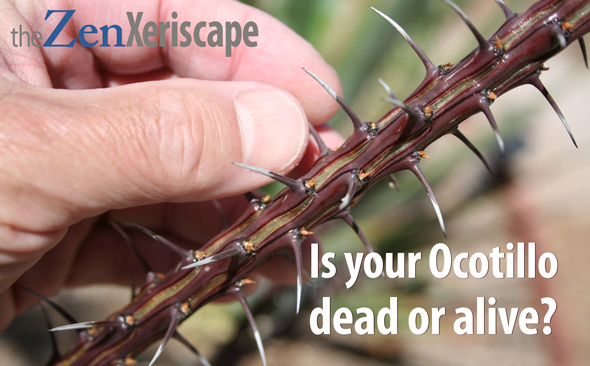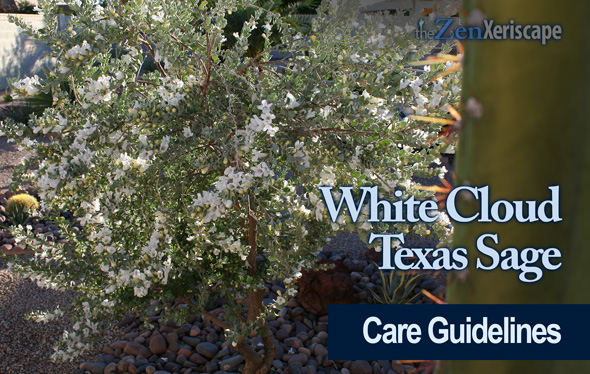While other plants are wilting under the hot southwestern summer sun, my red bird of paradise (Caesalpinia pulcherrima) is looking its most vibrant. The hotter it gets, the greener this hardy plant seems to get, and its flowers become even more flamboyantly showy. But, there must be some drawbacks! Read about the red bird of paradise pros and cons, and see if this lovely plant will work in your arid landscape.
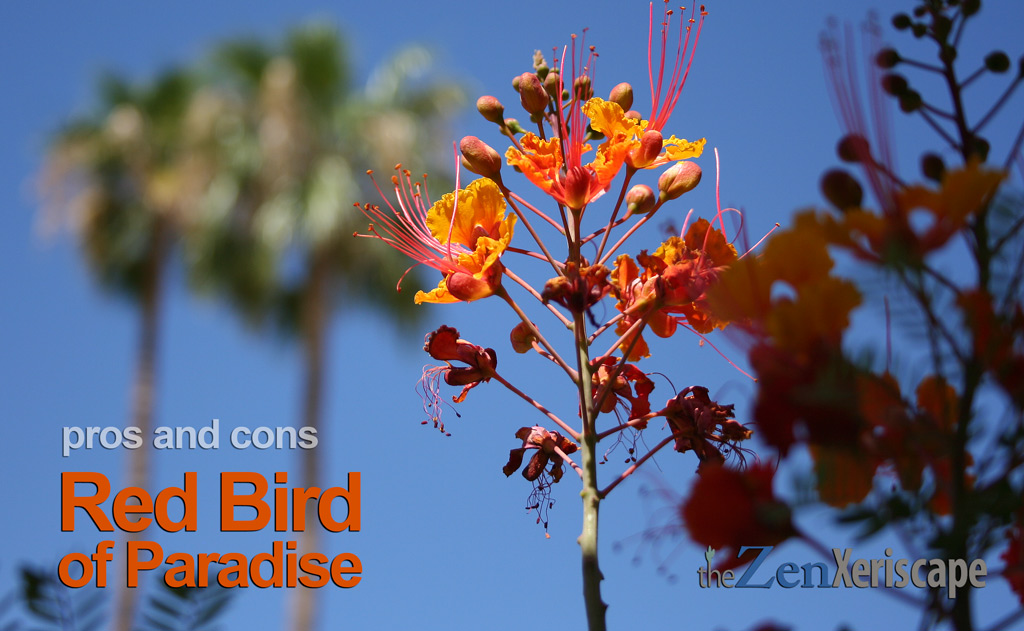
throughout spring, summer and fall.
Photo by Doug Martin
Free trials of Prime—explore your options! (As an Amazon Associate, I earn a commission from qualifying purchases.)
Red Bird of Paradise pros and cons
PROS:
Long-lasting, flamboyant flowers:
Its exuberant orange-red-and-yellow flowers are this plant’s biggest appeal. Here in the suburbs of Phoenix, Arizona, they begin flowering in the spring, and last throughout the fall. They appear in clusters and have long, red stamens that accentuate the overall orange-red-yellow gradations. See the photos below!
Grows quickly, especially after pruning:
Once established, the red bird of paradise grows quickly. Just buy a small, inexpensive plant, and by the second year it will be fully grown and pumping out colorful flowers and green foliage.
In its natural form, this shrub can grow up to 8-to-10 feet tall, but looks best when pruned to a more contained size. During its growing season, which is spring-summer-and-fall, I prune every other month.
Pruning makes the whole plant look fuller, with more lush green leaves, and more clusters of flowers.
Drought-tolerant:
Technically, the red bird of paradise is drought-tolerant and can survive on very little water. However, I deeply water my specimens once-a-week.
I’ve found that the extra water spurs more frenzied growth of leaves and more flower production. For me, that’s worth the little bit of extra water.
Doesn’t mind too much water:
And luckily, this plant does well even with too much water. For best results, group this bush together with other similar plants that can tolerate extra water during the growing season. I’m thinking of plants like Russian sage, along with other sages and perennial flowers.
Heat-tolerant:
With this exotic-looking bush, the more heat the better! Even during the hottest days that could kill other agaves and arid plants, the red bird of paradise is happier than ever.
To make the most of the heat, be sure to plant in full-sun for the best display of flowers.
The red bird of paradise is hardy in USDA hardiness zones 8-to-11, but some protection during the winter might be necessary in zones 8-to-9.
Many ways to use in landscape:
This plant is versatile—it could be a focal point, especially when paired with a taller, columnar cactus, for instance. Or, it could be a background plant that complements smaller flowers or plants in the foreground.
Because of its dense foliage, it could also be used as a hedge, or as a mass planting for a lush, vibrant blast of color.
In addition, this bush could be placed in a decorative container to add flexibility to your outdoor living space.
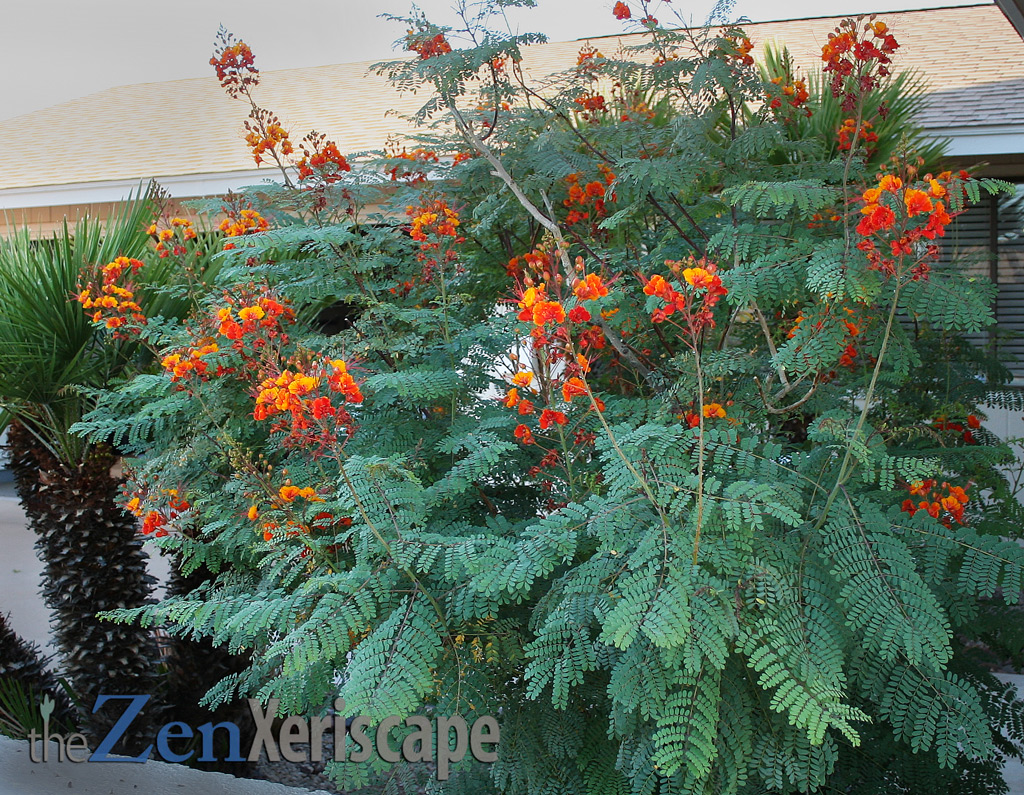
almost anywhere in a landscape.
Photo by Doug Martin
Low maintenance (but looks best when pruned):
While this bush can be low-maintenance, I really think it requires a little more pruning maintenance, at least when compared to a saguaro cactus or other succulents.
It looks best when it’s pruned regularly, and when it’s watered a little more often than other arid plants. But, while it can be low-maintenance, a little extra work will pay dividends with this bush!
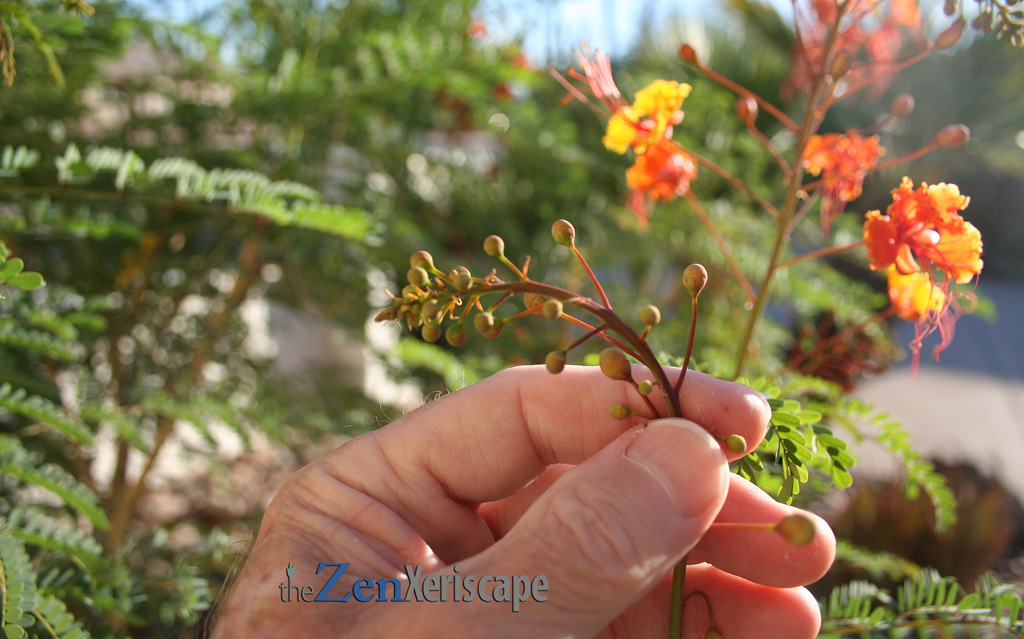
that continue to emerge as the stem grows.
Photo by Doug Martin
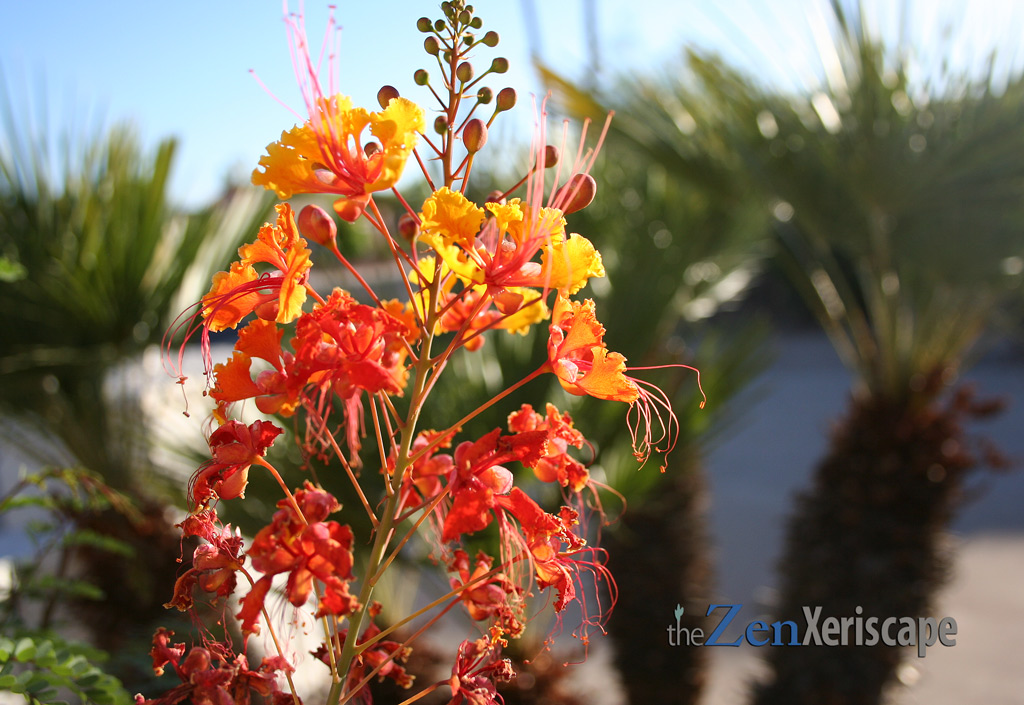
with new buds emerging on the stem
as the older flowers wilt.
Photo by Doug Martin
Red Bird of Paradise pros and cons
CONS:
Sensitive to cold:
This plant goes dormant during the winter here in southern Arizona. Growth slows down dramatically, and it drops some leaves. And it is sensitive to temps below freezing.
Here in Phoenix, that’s not much of a problem, since below-freezing temps are rare. But, when I lived in Las Cruces, New Mexico, the colder winter temperatures did cause problems with this bush. Occasionally, my red bird of paradise plants did die back to the roots during the winter.
Then in the spring, they resprouted, but it was at a much slower pace. And, for me, they never grew as big in southern New Mexico as they do here in southern Arizona. But, as long as they were in the sun in Las Cruces, NM, they did flower beautifully throughout the summer.
So during the winter, your hardiness zones will be a big factor as to how your red bird of paradise performs.
Needs to be pruned:
This is a fast-growing bush, but to keep it from getting too leggy, it needs regular pruning. Pruning can help restore its shape, and it can also prompt thicker foliage and flower production.
So, the little extra time spent pruning this bush can reap big dividends from spring-to-fall.
Seed pods and seeds can be toxic:
While all parts of this bush can be toxic if ingested, the seeds can be especially noxious. This plant is a member of the legume family, and the seed pods are produced after the flowers die.
Personally, I think the seed pods smell unpleasant, so I am not tempted to eat them. Periodically, I prune the seed pods off as part of the regular pruning process. The oils make my hands feell oily and smell unpleasant, so I wash them immediately afterwards.
Fortunately, my dog doesn’t find this plant appealing at all. So, I don’t think I have to worry about him surreptitiously eating one while I’m not looking.
But, as always, be cautious with this plant, because your experience might differ.
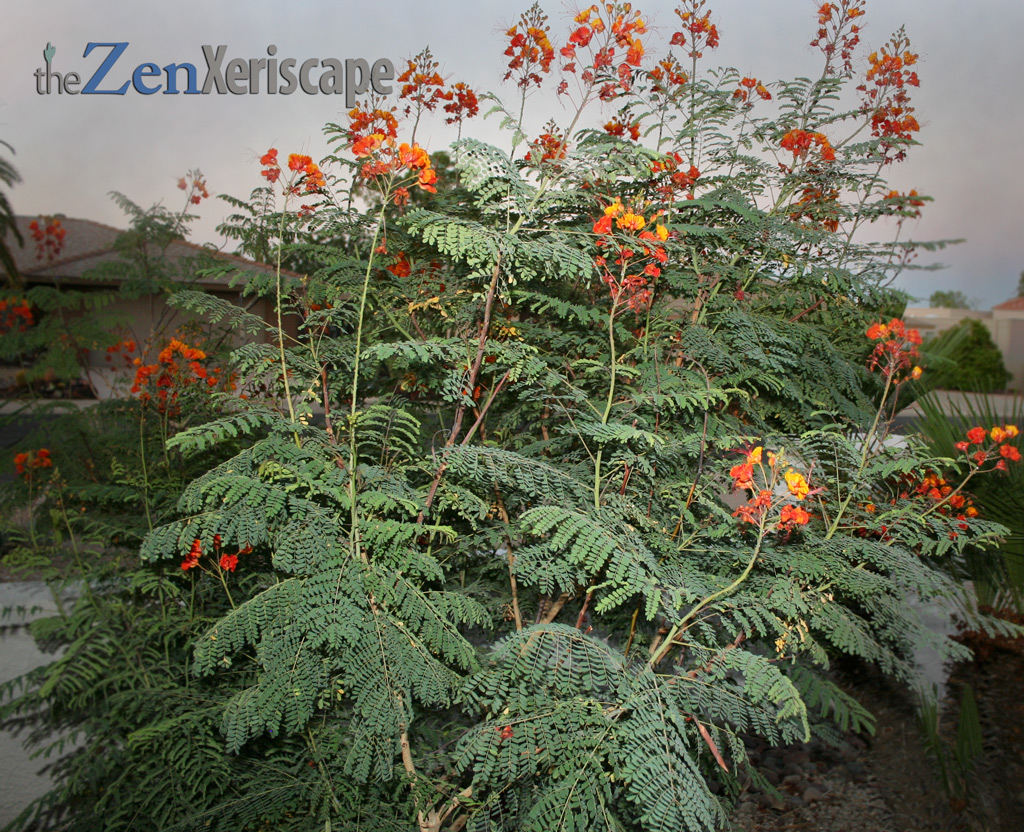
as a privacy hedge, or as a focal point
in your landscape.
Photo by Doug Martin
Takeaways:
Red Bird of Paradise pros and cons
The red bird of paradise (Caesalpinia pulcherrima) is heat tolerant—in fact, it soaks up the heat with relish. While other plants are wilting or expiring, this hardy bush looks its best. That’s why, especially if you live in the southwestern United States, this plant is an essential element to any arid landscape.
And the vibrant flowers are unmatchable, with their flamboyantly orange-red-yellow gradations. The exotically lush, green foliage, along with the flowers, are something every gardener should experience.
Despite the little extra pruning maintenance, and the little extra water I use to encourage lusher growth, I think this bush deserves a place in your xeriscape.
Content and photos by Doug Martin and The Zen Xeriscape.


